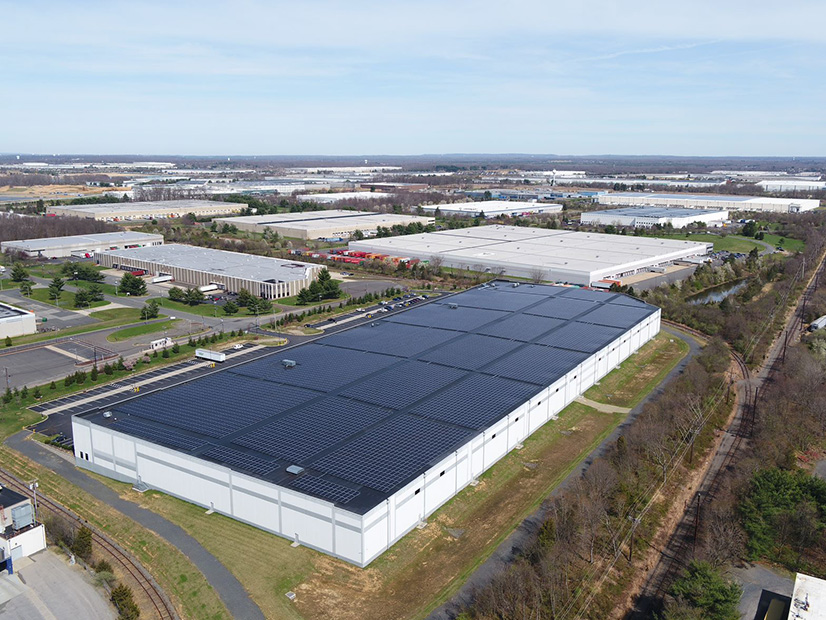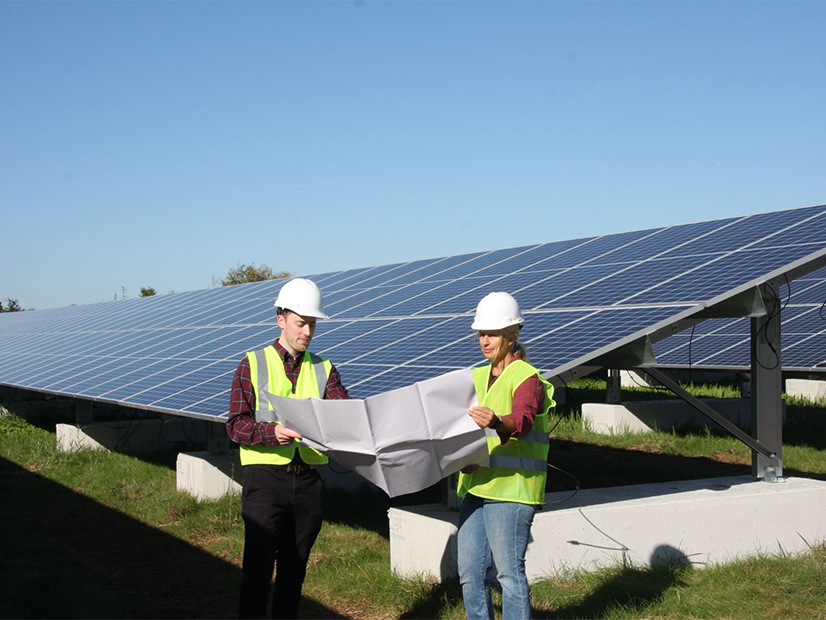
New Jersey is implementing a plan to create a permanent community solar program built on the experience of two rounds of a pilot initiative in which only a third of the projects approved so far are operational, as developers struggle to sign up subscribers, prepare project sites and get their projects linked to the grid within the program deadline.
The New Jersey Board of Public Utilities (BPU) on Friday closed the public comment period seeking stakeholder issues to help shape the new program, which will award 150 MW each year and is expected to open in the fall. Among the issues the BPU sought to probe were: how should the agency pick future projects; should there be a waiting list on which to put projects not selected; and what should the BPU do to account for “scrub” projects, those that are awarded but are not completed?
The initiative comes 18 months after the BPU approved 45 projects totaling 75 MW in the first of two test solicitations that drew strong interest from developers and helped cement the program as a key element in the effort to reach Gov. Phil Murphy’s solar and clean energy goals. That sense was enhanced when the BPU approved another 105 projects, totaling 165 MW in the second phase in October. (See NJ Selects 165 MW in Community Solar Projects.)
Yet only 14 of those 45 projects were operating as of March, the latest that data are available, as they faced an end-of-April deadline to be operational. The completed projects total 28.9 MW, or about 38% of the capacity awarded in that phase. None of the second-round projects is operational.
“It’s developing much more slowly than we had anticipated, no question,” said Fred DeSanti, executive director of the New Jersey Solar Energy Coalition (NJSEC). “There’s not a lot going on.”
That slow progress contrasts with the potential that supporters see in the community solar program. Both solicitations were heavily oversubscribed by developers seeking to build solar projects on warehouse landfills, rooftops, above parking lots and other locations. The first year of the program attracted 252 applicants, five times as many as the number of projects awarded, and the second phase drew 412 applications, about four times as many as were awarded. And there is no shortage of future projects.
One developer, Solar Landscape, which completed eight of the 14 projects in operation, said it recently conducted a study that showed that solar projects have used only about 5% of the potentially usable rooftop space in the state.
“Every new program has its challenges,” said Mark F. Schottinger, the company’s president. “But the availability of rooftops is not one of them.”
Asked whether the number of projects in operation is lower than expected, BPU spokesman Peter Peretzman said: “The board continues to receive very strong interest in community solar and looks forward to transitioning to a permanent program which will provide further opportunities for new projects to be developed.”
Peretzman said there are a variety of reasons why more projects have not advanced, among them “site preparation challenges and disagreements between site host and developer.” He added that the goal of the pilot program was to “explore a new model for solar development and provide lessons for the development of a permanent community solar program.”
One possible outcome, he said, is that “the board may consider changing project maturity requirements for the permanent program.”
Meeting Deadlines
New Jersey is one of about 20 states that have recognized the benefits of shared renewables by encouraging their growth through policy and programs. The state’s initiative is part of Murphy’s push to have it reach 100% clean energy and generate 32 GW of solar, about nine times the capacity online today, by 2050.
Community solar projects target users who either cannot or do not want to have solar on their roofs but want to support a clean energy initiative. In many instances, developers start enrolling subscribers before they begin building a project or look for a business to be an “anchor” subscriber by committing to buying a certain percentage of the power from the project.
In return for subscribing, the consumer receives a credit on their utility bill, reducing the electricity cost by a set percentage. The solar project operator then supplies the electricity generated in the project to a utility company, which provides power to the consumer in the same way the utility did before opting into community solar.
 A 0.83 MW solar project developed by AC Power on a closed landfill in Edison | AC Power
A 0.83 MW solar project developed by AC Power on a closed landfill in Edison | AC Power
Developing projects that will bring that vision to reality, however, is no small feat. Annika Colston, president of New York City-based AC Power, said the BPU approved four company proposals in the first community solar solicitation, of which three are in operation, totaling 5.4 MW. The fourth project, and one approved in the second phase, are still pending.
The company struggled to meet the April deadline, in large part for reasons beyond its control, many of them related to a delay in Public Service Electric & Gas connecting each project to the grid because it was waiting for equipment held up in the supply chain, she said.
“The deadlines associated with the community solar program can be very stressful and can create a lot of investor uncertainty and financial uncertainty as you continue to develop projects,” she said.
Subscriber Hesitation
The process has unfolded as developers faced an environment already rife with pitfalls from the pandemic, which made it difficult to get municipal approval for projects and created equipment shortages and rising prices because of supply chain issues.
NJSEC’s DeSanti said a key issue holding up some projects has been the difficulty of meeting the state’s requirement that 51% of the subscribers are low- to moderate-income households.
“We are having a great amount of difficulty with subscriber eligibility and making sure that we can get people signed up,” DeSanti told the BPU at a public hearing last month. He urged the BPU to “look at those regulations as soon as possible to try to loosen them, or a lot of those projects are just not going to come to fruition.”
One problem is that some potential low- and moderate-income subscribers balk out of fear that the resulting reduction in their energy costs will interfere with the support they get from a state program that helps them pay their energy costs, DeSanti said. Another obstacle is that some lose their interest when they see the documentation they would have to submit to participate, especially the requirement to provide a W2 or other proof of income, he said.
“There’s a real reluctance to get involved with providing information about income levels,” DeSanti said. One solution would be to allow people to “self-attest” that their income is below the threshold that would classify them as low- or moderate-income, he said.
The BPU could also help by expanding the census tracts in which residents are automatically assumed to be low to moderate income, and so eligible for the program, he said.
Opening up the Market
Despite those concerns, Solar Landscape — which opened the state’s first two operational community solar projects on the rooftops of Perth Amboy warehouses in January 2021 — believes that the program will be a key element of the state’s solar energy portfolio.
The company’s Schottinger called it “the best product that New Jersey has ever allowed.” Aside from the company’s eight first-round projects, which total 20 MW, Solar Landscape received BPU approval on 46 projects in the second solicitation, totaling 50 MW. The company plans to submit applications when the BPU opens the permanent program.
Pent-up demand explains the flood of developer applications in the two pilot phases, Schottinger said. Before the BPU created the community solar program, New Jersey law largely limited the size of a rooftop solar project to the amount of energy that could be consumed on which it was mounted, he said. With community solar projects, “that limitation went away, because we no longer sell the electricity and community solar to whoever is in the building. Instead, we’re selling the electricity to people, residents, households and the surrounding communities,” he said.
“Community solar opened up a ton of usable rooftop space for solar that didn’t qualify for solar before,” he said.
The task of signing up subscribers is a challenge, especially in overcoming a skepticism about the claims of what community solar offers, he said.
“Some consumers think the community solar product sounds too good to be true, because we offer guaranteed savings with no downsides (e.g., people can cancel any time without penalty),” Schottinger said in an email, adding that the claims are nevertheless true.
But as consumer understanding of community solar improves, acceptance will spread, he said.
Communicating with Consumers
To help that happen, Solar Landscape has since 2021 partnered with the Boys and Girls Club of Newark. The nonprofit organization is one of dozens that the developer has worked with in a strategy used by developers to reach the low- and moderate-income population by working with local partners.
The collaboration allows the club to promote the energy discounts to the community while supporting the effort to reduce climate change and bringing in income, said CEO Ameer Washington. The club provides information about community solar to the families of the 1,000 to 1,100 children who each year use the organization’s after-school or summer programs, and another 10,000 people in the community who are more loosely tied to the organization, through a combination of printed leaflets, email blasts and social media, he said. Anyone that wants to sign up would then go directly to Solar Landscape , he said.
In return, Solar Landscape pays the club about $100 for each subscription, which so far has brought in about $3,000, Washington said.
“It’s not big numbers,” he said, but “every dollar helps, for sure.”
One problem, he said, is that many people in the community don’t have utility accounts.
“There’s not a lot of homeowners here that we serve,” he said. “Probably 65 to 80% of our club members are from low-income families and single-parent homes, and a lot of people in Newark rent primarily,” he said. In that case, the landlord may hold the utility account, and it would have to be the landlord’s decision to shift to clean energy, he said.
Even if the tenant has their own energy account, “in terms of some of the families that we do serve, maybe it’s not high on their priority list and they’ve got other things that they’re probably talked about more than how they’re getting their electricity,” he said.
Still, he said, the partnership offers a good opportunity to help people “start making the transition to clean energy.”


